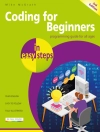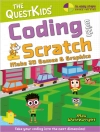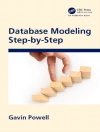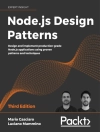Edward Muybridge (1830–1904) is known as the pioneer in motion capt- ing with his famous experiments in 1887 called “Animal Locomotion”. Since then, the ?eld of animal or human motion analysis has grown in many dir- tions. However, research and results that involve human-like animation and the recovery of motion is still far from being satisfactory. The modelling, tracking, and understanding of human motion based on video sequences as a research ?eld has increased in importance particularly in thelastdecadewiththeemergenceofapplicationsinsportssciences, medicine, biomechanics, animation (online games), surveillance, and security. Progress in human motion analysis depends on empirically anchored and grounded research in computer vision, computer graphics, and biomechanics. Though these ?elds of research are often treated separately, human motion analysis requires the integration of methodologies from computer vision and computer graphics.Furthermore, theunderstandinganduseofbiomechanicsconstraints improves the robustness of such an approach. This book is based on a June 2006 workshop held in Dagstuhl, Germany. This workshop brought together for the ?rst time researchers from the afo- mentioned disciplines. Based on their diverse perspectives, these researchers havebeendevelopingnewmethodologiesandcontributing, throughtheir?- ings, to the domain of human motion analysis. The interdisciplinary character of the workshop allowed people to present a wide range of approaches that helped stimulate intellectual discussions and the exchange of new ideas.
Table of Content
2D Tracking.- Understanding Human Motion: A Historic Review.- The Role of Manifold Learning in Human Motion Analysis.- Recognition of Action as a Bayesian Parameter Estimation Problem over Time.- The William Harvey Code: Mathematical Analysis of Optical Flow Computation for Cardiac Motion.- Detection and Tracking of Humans in Single View Sequences Using 2D Articulated Model.- Learning.- Combining Discrete and Continuous 3D Trackers.- Graphical Models for Human Motion Modelling.- 3D Human Motion Analysis in Monocular Video: Techniques and Challenges.- Spatially and Temporally Segmenting Movement to Recognize Actions.- Topologically Constrained Isometric Embedding.- 2D–3D Tracking.- Contours, Optic Flow, and Prior Knowledge: Cues for Capturing 3D Human Motion in Videos.- Tracking Clothed People.- An Introduction to Interacting Simulated Annealing.- Motion Capture for Interaction Environments.- Markerless Motion Capture for Biomechanical Applications.- Biomechanics and Applications.- Qualitative and Quantitative Aspects of Movement: The Discrepancy Between Clinical Gait Analysis and Activities of Daily Life.- Optimization of Human Motion Exemplified with Handbiking by Means of Motion Analysis and Musculoskeletal Models.- Imitation Learning and Transferring of Human Movement and Hand Grasping to Adapt to Environment Changes.- Accurate and Model-free Pose Estimation of Crash Test Dummies.- Modelling and Animation.- A Relational Approach to Content-based Analysis of Motion Capture Data.- The Representation of Rigid Body Motions in the Conformal Model of Geometric Algebra.- Video-based Capturing and Rendering of People.- Interacting Deformable Objects.- From Performance Theory to Character Animation Tools.












